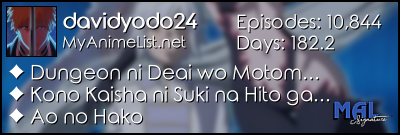@Spoof_490
TV slots are decided far in advance. The staff would know about any other series that come after. Had it not been for the previous delay, this season would've ended this week like normal, without a need for another one. And the previous delay happened because of the production crunch, as this team has to share resources with Roshidere, which was supposed to air last season but got delayed and had to air along with OnK, leading to more pressure on the staff. To quote Kevin from sakugablog in a recent article about this season:
an important idea to grasp beforehand is that Oshi no Ko was designed to be a megahit, but not really granted the circumstances that would lead to that somewhat smoothly. Sure, it accomplished its lofty goal immediately upon arrival, but that was all thanks to the punch of the source material, smart planning specifically on the creator’s side, and a collection of individuals who allowed it to punch way above its weight. Ever since then, Oshi no Ko has continued to grow, and the situation at the studio has conversely gotten even tighter. For as much as there is to love about a lot of people working at studio Dogakobo, as a company they’ve systematically failed to capitalize on their established brand and the massive popularity of some of their works; had they managed that properly, they might not have been acquired by Kadokawa recently, and more importantly, they wouldn’t have become a ruthlessly paced assembly line.
While their 3-5 major projects a year don’t look as scary of a workload as the most infamous sweatshops in the anime industry, Dogakobo is relatively small compared to those. Especially in recent years, their production lines have concentrated as well, meaning that certain teams are stuck in an endless cycle of tight deadlines. That much is true for the team behind Oshi no Ko, who aren’t only booked with this popular series for the foreseeable future, but also heavily overlap with other titles. The most evident instance in this very season is Alya Sometimes Hides Her Feelings in Russian, also known as Roshidere. That adaptation, also led by Oshi no Ko’s producer Ryo Kobayashi, shares a sizable part of its team with its neighboring projects; much of its directorial staff hails from the first season of Oshi no Ko, and in some instances, people on those roles had to juggle both projects for the sequel. Key individuals in both creative and management roles were put in similar situations, and the whole studio was strained.
Although they weren’t meant to overlap in their broadcast, Roshidere hit a completely unsurprising bump on the road given this reckless planning, and thus was delayed for 3 months—meaning that it just so happens to air back to back with Oshi no Ko right now. That is, on its own, a mere piece of trivia; if anything, people in the team are amused by the fact that they’re broadcast on the same TV station one after the other, having dubbed it Super Dogakobo Time. The sequential broadcast of the third episodes in both shows sharing the same storyboarder and director (aided by similar people in important animation duties too) is technically a coincidence, but the fact is that the two projects were recklessly slated with very little time in between them. As one began stumbling, their two timelines lined up more and more, thus endangering Oshi no Ko as well.
The ability of certain production assistants to juggle episodes from both shows at the same time is indeed worthy of praise, but that doesn’t mean they should be tested to such a stressful extent; frankly, the production of the sixth episode of your high-profile series should never be heavily overlapping with the eighth one for a series that should have already been fully broadcast by then. |






